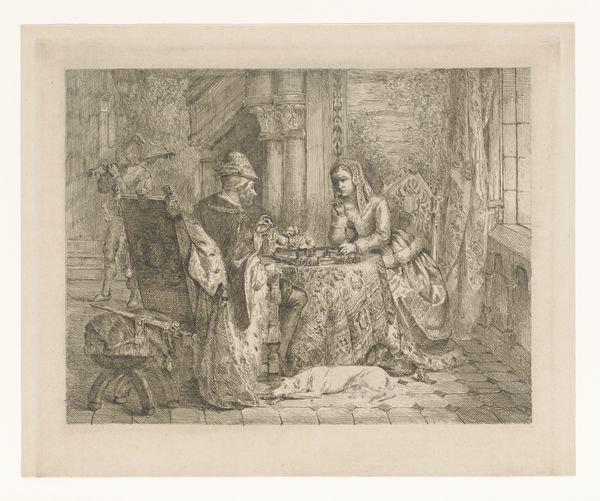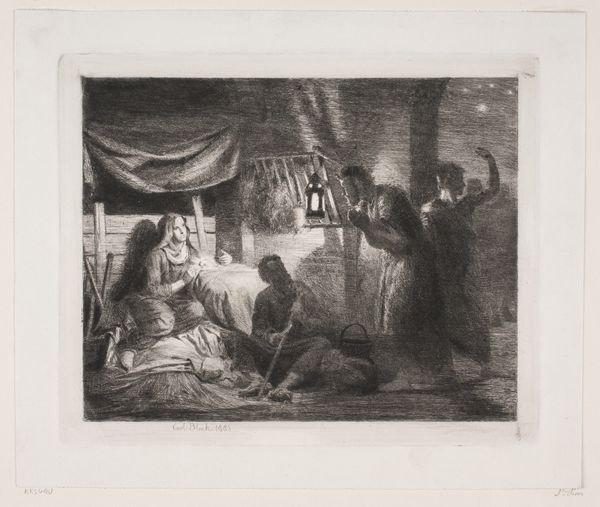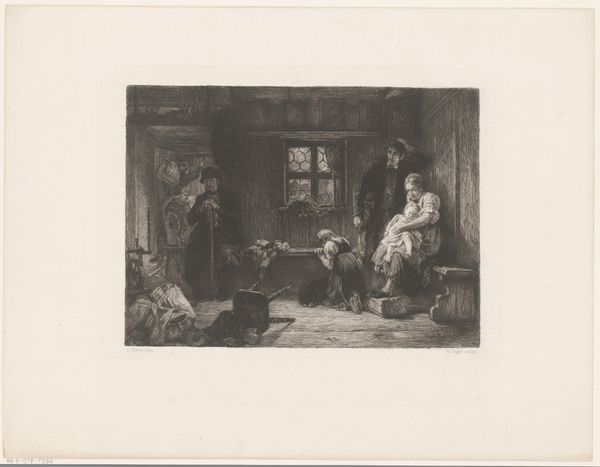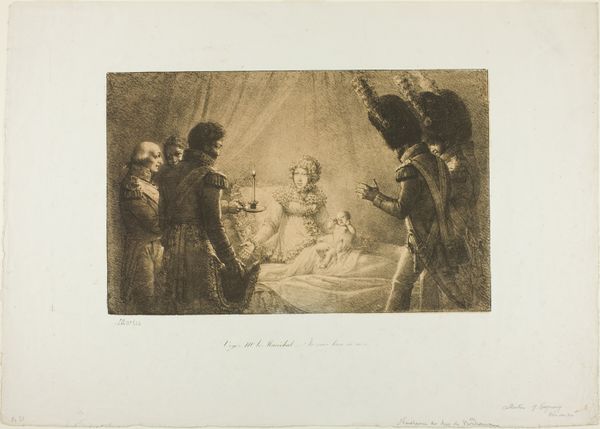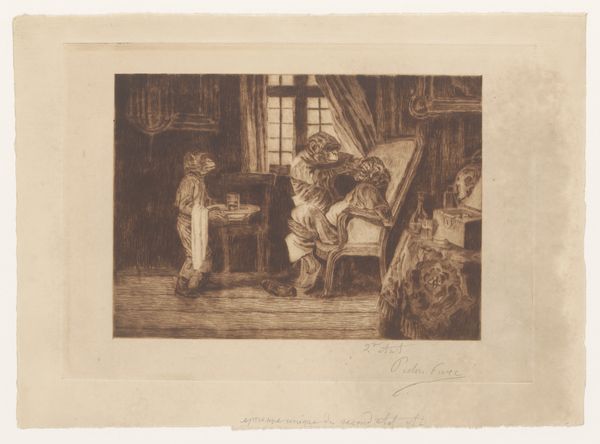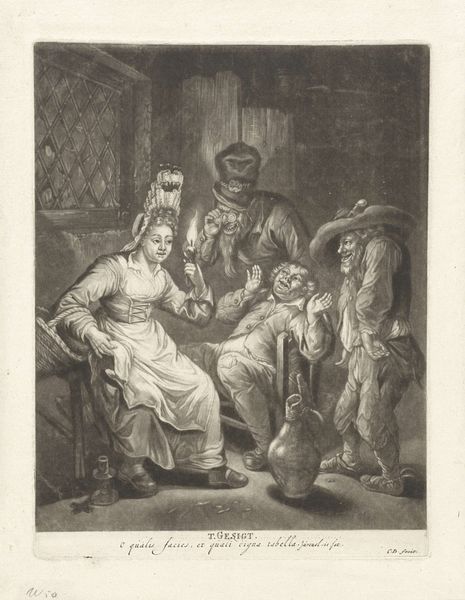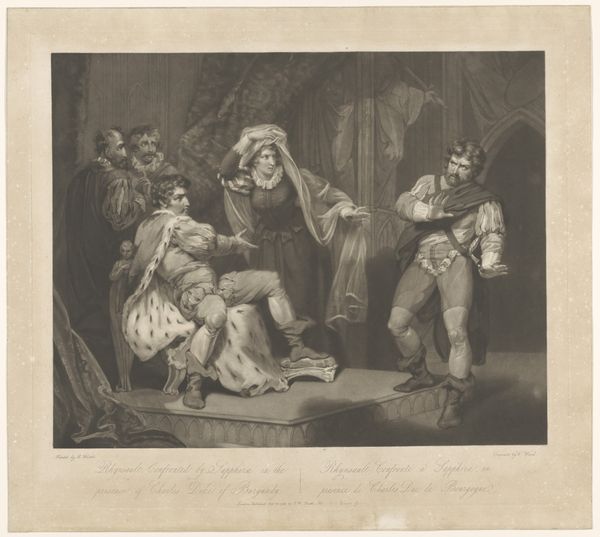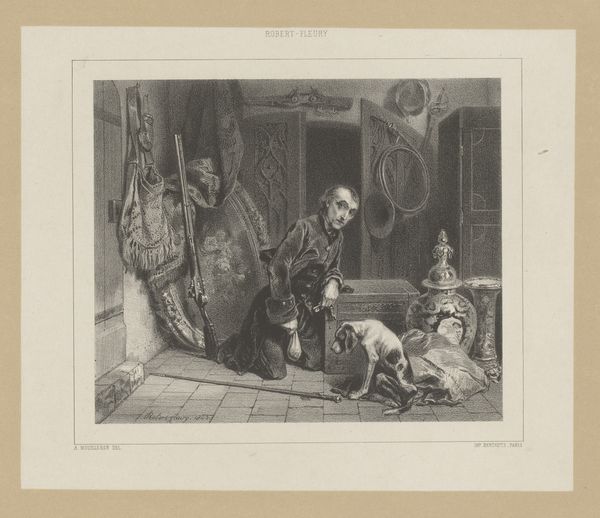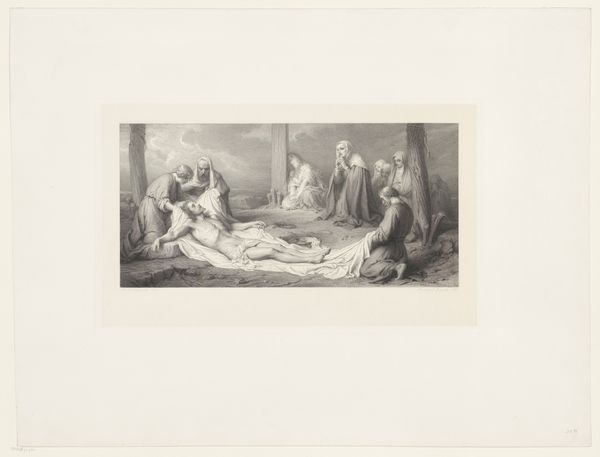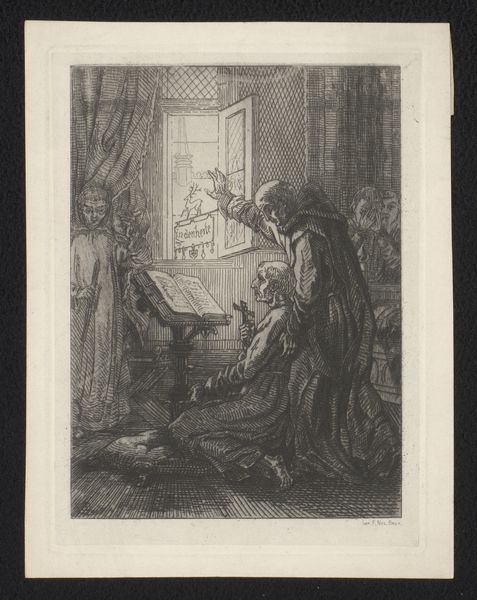
print, intaglio, engraving
#
portrait
#
pencil drawn
#
light pencil work
#
narrative-art
#
photo restoration
# print
#
intaglio
#
pencil sketch
#
charcoal drawing
#
figuration
#
pencil drawing
#
pencil work
#
genre-painting
#
history-painting
#
engraving
#
realism
Dimensions: height 263 mm, width 314 mm
Copyright: Rijks Museum: Open Domain
Adrien Joseph Verhoeven-Ball created this etching depicting Louis XI and his daughter playing chess sometime in the mid-19th century. Etching is an intaglio printmaking method that relies on the corrosive power of acid to create an image on a metal plate. The plate is covered with a waxy, acid-resistant substance, and the artist scratches through this coating with a pointed tool, exposing the metal. The plate is then immersed in acid, which bites into the exposed lines, creating grooves. The remaining coating is removed, and the plate is inked. The ink is then wiped from the surface, remaining only in the etched grooves. Finally, paper is pressed against the plate, transferring the ink and creating the print. In this print, the textures and tonal variations created by the etching process lend depth and richness to the scene. The fine lines and subtle shading capture the opulence of the royal setting and the intricacy of the figures' costumes. By understanding the material and the making of this artwork, we can appreciate Verhoeven-Ball's skill in using etching to evoke the historical and cultural context of his subject, blurring the lines between artistic skill, technical process, and historical narrative.
Comments
No comments
Be the first to comment and join the conversation on the ultimate creative platform.
